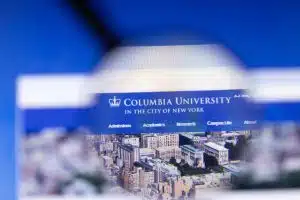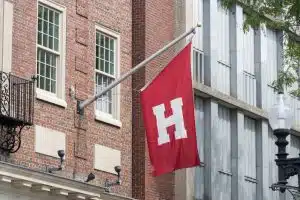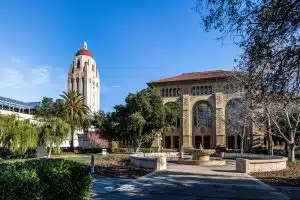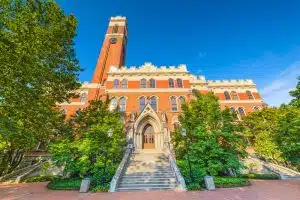Exploring UCLA Enrollment Trends
The University of California, Los Angeles, often abbreviated as UCLA, has been a benchmark educational institution in the United States for years. As one of the most applied-to universities in the world, it is crucial to take a detailed look into its enrollment patterns. This comprehensive review will delve into the various aspects of UCLA’s admission trends, student demographics, and prospective changes in future enrollments.
Historical Overview of UCLA Admissions
UCLA’s admission patterns have always been a reflection of its constant pursuit of excellence and diversity. Over the years, the university has seen an escalation in the number of applicants per year, resulting in an increasingly competitive selection process. This can be attributed to UCLA’s academic reputation and the amplifying appeal of Los Angeles as a global city.
In the early years of its establishment, UCLA experienced a gradual increase in the number of applicants. However, it was during the 1960s and 1970s that the university witnessed a significant surge in applications. This can be attributed to the social and cultural changes that occurred during that time, as well as the growing recognition of UCLA as a leading institution in various academic fields.
Throughout the 1980s and 1990s, UCLA continued to attract a large pool of applicants, with the numbers steadily rising each year. This period also marked the university’s efforts to enhance diversity and inclusivity in its student body. As a result, UCLA became known for its commitment to fostering a multicultural environment and providing equal opportunities for students from all backgrounds.
In the early 2000s, UCLA faced a significant increase in applications, leading to a more competitive admission process. The university’s reputation as a top-tier institution, combined with its location in the vibrant city of Los Angeles, made it an attractive choice for students from around the world. This trend has continued in recent years, with UCLA consistently receiving a high number of applications.
Recent Enrollment Figures
In recent years, UCLA has maintained its position as one of the most sought-after universities in the United States. Continuous growth in student applications year over year has led to an inflation in their acceptance rates, making UCLA a highly selective university. However, a proportional expansion in student enrollment indicates UCLA’s commitment to providing quality education to a diverse population.
In the past five years, the university has experienced a steady increase in the number of admitted students. This growth can be attributed to various factors, including the expansion of academic programs, the introduction of new majors, and the implementation of innovative teaching methods.
Furthermore, UCLA’s commitment to diversity is evident in its enrollment statistics. The university has made significant efforts to increase representation from underrepresented communities, resulting in a more inclusive student body. This dedication to diversity is reflected in the various support programs and resources available to students from diverse backgrounds.
It is important to note that while UCLA’s acceptance rates may appear low due to the high number of applicants, the university remains committed to providing a high-quality education to all admitted students. The rigorous academic programs, renowned faculty, and state-of-the-art facilities contribute to the overall student experience at UCLA.
In conclusion, understanding UCLA’s admission statistics requires considering its historical context and recent enrollment figures. The university’s commitment to excellence, diversity, and providing a top-tier education is evident in its admissions process and the growth of its student population over the years.
Factors Influencing UCLA Enrollment
With the ever-rising number of applications, there are multiple factors influencing UCLA’s enrollment trends. These influences include tuition prices and financial aid, the university’s esteemed academic reputation, and the alluring attributes surrounding campus life and location.
Impact of Tuition and Financial Aid
Tuition costs and availability of financial aid significantly impact UCLA’s enrollment patterns. Prospective students often weigh the cost of attendance against the potential return on investment in terms of career growth and opportunities. To address this, UCLA has a robust financial aid program that aids students from diverse financial backgrounds.
UCLA understands the importance of making higher education accessible and affordable. The university offers various scholarships, grants, and work-study opportunities to help students alleviate the financial burden. Additionally, UCLA’s financial aid office provides personalized guidance to students, ensuring they have the necessary resources to pursue their academic goals.
By offering a range of financial aid options, UCLA strives to attract a diverse student body, fostering an inclusive and equitable learning environment. This commitment to accessibility has contributed to the university’s reputation as a leader in higher education.
Role of Academic Reputation
The reputation of UCLA, both nation-wide and globally, is undeniable. With its prolific faculty, extensive research opportunities, and a wide array of course offerings, UCLA continues to establish itself as a leader in higher education. This status aids in attracting a broad base of applicants and maintaining high enrollment numbers.
UCLA’s faculty members are renowned experts in their respective fields, conducting groundbreaking research that pushes the boundaries of knowledge. Students have the opportunity to learn from these distinguished scholars, gaining invaluable insights and mentorship. The university’s commitment to academic excellence is reflected in its rigorous curriculum, which prepares students for success in their chosen fields.
Furthermore, UCLA’s research programs provide students with hands-on experience, allowing them to contribute to cutting-edge discoveries and innovations. This emphasis on research not only enhances the learning experience but also positions UCLA graduates as highly sought-after candidates in the job market.
Influence of Campus Life and Location
The UCLA campus, located within the vibrant city of Los Angeles, offers a blend of engaging student life and rich cultural experiences. The university’s engagement programs and recreational facilities create an environment that enriches student life beyond academics, further enticing students towards UCLA.
UCLA boasts a diverse and vibrant student community, with numerous clubs, organizations, and extracurricular activities catering to a wide range of interests. From academic clubs to performing arts groups, there is something for everyone at UCLA. These opportunities foster a sense of belonging and community, allowing students to form lasting friendships and connections.
Moreover, UCLA’s location in Los Angeles provides students with access to a wealth of cultural and professional opportunities. The city is home to renowned museums, theaters, and entertainment venues, offering students a chance to engage with the arts and entertainment industry. Additionally, Los Angeles serves as a hub for various industries, providing internships and networking opportunities for UCLA students.
With its picturesque campus nestled in the heart of a bustling city, UCLA offers a unique college experience that combines academic rigor with a vibrant social scene. The university’s commitment to holistic education ensures that students not only excel academically but also develop into well-rounded individuals ready to make a positive impact on the world.
Breakdown of UCLA’s Student Demographics
An aspect that sets UCLA apart is the diversity within the student body. The following sections will observe the in-state vs. out-of-state student ratio and the extensive diversity within the university’s populous student body.
Analysis of In-State vs. Out-of-State Students
UCLA continues to hold a substantial attraction for students both locally within California and nationally from other US states. Through a detailed look at the admissions data, a significant proportion of the student body consists of California residents. This can be attributed to several factors, such as the university’s reputation for academic excellence, its proximity to major cities like Los Angeles, and the availability of various programs and resources tailored to the needs of in-state students.
However, the rise in out-of-state students over the years showcases UCLA’s expanding outreach. The university’s reputation has spread far and wide, attracting students from all corners of the country. Out-of-state students bring with them unique perspectives and experiences, enriching the overall learning environment at UCLA. They contribute to the vibrant cultural tapestry of the campus, fostering a sense of global interconnectedness among the student body.
Furthermore, the presence of out-of-state students also benefits the local community. As these students explore the city of Los Angeles and its surroundings, they contribute to the local economy by patronizing businesses and engaging in various cultural and recreational activities. This symbiotic relationship between UCLA and the broader community strengthens the ties between the university and its surrounding environment.
Diversity in UCLA’s Student Body
With a deep commitment to diversity, UCLA has consistently encouraged enrollment from students of different ethnic, cultural, and socioeconomic backgrounds. The university’s multicultural environment is a testament to its principles of embracing variety and inclusivity. Students at UCLA have the opportunity to interact with peers from diverse backgrounds, fostering a sense of understanding, tolerance, and appreciation for different cultures.
UCLA actively promotes diversity through various initiatives and programs. The university offers scholarships and financial aid packages to ensure that students from all socioeconomic backgrounds have access to quality education. Additionally, UCLA’s numerous student organizations and clubs celebrate different cultures, providing platforms for students to share their traditions, customs, and experiences with the wider campus community.
Moreover, UCLA’s commitment to diversity extends beyond ethnicity and culture. The university also strives to create an inclusive environment for students with disabilities, LGBTQ+ students, and individuals from marginalized communities. Through the provision of accessible facilities, support services, and advocacy programs, UCLA ensures that every student feels valued and supported throughout their academic journey.
By embracing diversity, UCLA prepares its students for the globalized world they will enter upon graduation. The exposure to different perspectives and experiences equips UCLA graduates with the skills necessary to navigate an increasingly interconnected and multicultural society. As a result, UCLA alumni are well-prepared to contribute positively to their respective fields and make a meaningful impact on the world.
Graduate vs. Undergraduate Enrollment at UCLA
UCLA’s extensive academic portfolio caters to both undergraduate and graduate students. The shifts in these enrollment trends can be observed in terms of numbers and disciplinary preferences.
Trends in Undergraduate Admissions
UCLA’s undergraduate programs are highly sought after, leading to steady growth in the undergraduate population. The university’s diverse range of undergraduate studies and the stature of its degree programs collectively contribute towards this trend.
One of the key factors driving the increase in undergraduate enrollment at UCLA is the university’s commitment to providing a well-rounded education. With over 125 majors and 80 minors to choose from, students have the opportunity to explore a wide range of academic disciplines. From the humanities to the sciences, UCLA offers a comprehensive curriculum that caters to the diverse interests and career goals of its undergraduate students.
In addition to its academic offerings, UCLA’s vibrant campus life also plays a significant role in attracting undergraduate students. The university boasts a thriving student community, with over 1,000 student organizations and clubs. From cultural and ethnic associations to academic and professional societies, there is something for everyone at UCLA. This rich extracurricular environment enhances the overall college experience and fosters personal growth and development.
Furthermore, UCLA’s location in Los Angeles provides students with unparalleled opportunities for internships and career advancement. The city is a hub for various industries, including entertainment, technology, and healthcare, offering students a wealth of experiential learning opportunities. This proximity to real-world experiences and professional networks is a major draw for undergraduate students seeking to kickstart their careers.
Shifts in Graduate Student Enrollment
Graduate enrollment at UCLA has also seen a burgeoning trend over recent years. An increase in such applications is a testament to the university’s reputation as a leading destination for higher academic and research pursuits.
UCLA’s graduate programs are highly regarded for their academic rigor and the opportunity to work with world-renowned faculty. The university offers a wide range of master’s and doctoral programs across various disciplines, attracting top-tier students from around the globe.
One of the factors contributing to the growth in graduate student enrollment is UCLA’s commitment to fostering a research-intensive environment. The university invests heavily in research infrastructure and provides ample funding opportunities for graduate students to pursue their scholarly interests. This support allows students to engage in cutting-edge research and contribute to the advancement of knowledge in their respective fields.
In addition to the academic benefits, UCLA’s graduate students also benefit from a vibrant intellectual community. The university hosts numerous conferences, seminars, and workshops, providing opportunities for interdisciplinary collaboration and intellectual exchange. These events not only enrich the graduate student experience but also help cultivate a network of scholars and professionals that can support their future academic and professional endeavors.
Furthermore, UCLA’s location in the heart of Southern California offers graduate students access to a diverse and dynamic cultural landscape. From world-class museums and theaters to a thriving startup scene, Los Angeles provides a stimulating environment for graduate students to explore and engage with a wide range of cultural and professional opportunities.
Future Predictions for UCLA Enrollment
UCLA’s enrollment trends have been consistent over the years, however, factors like the rise of online learning, changing student demographics, and potential shifts in admission policies might yield significant effects.
Impact of Online Learning on Enrollment
The recent advancements in technology, specifically the rise of online learning platforms, might influence future enrollment trends at UCLA. With increased access to education through digital mediums, UCLA could potentially see growth in its online student population.
Predicted Changes in Student Demographics
UCLA’s student body is continuously evolving in terms of demographics. The university, with its commitment to diversity and inclusivity, may see an even more diverse group of students in the coming years as it expands its outreach to underrepresented groups.
Potential Shifts in Admission Policies
The dynamic nature of higher education might prompt UCLA to revisit its admission policies in the future. This could potentially influence the university’s enrollment trends by modifying the selection criteria to accommodate changing educational priorities.
In summation, UCLA’s enrollment trends provide a lens through which students can understand the broader shifts occurring in higher education in the United States. Monitoring these changes is crucial for prospective students, educational analysts, and others vested in the future of the American educational landscape.








































